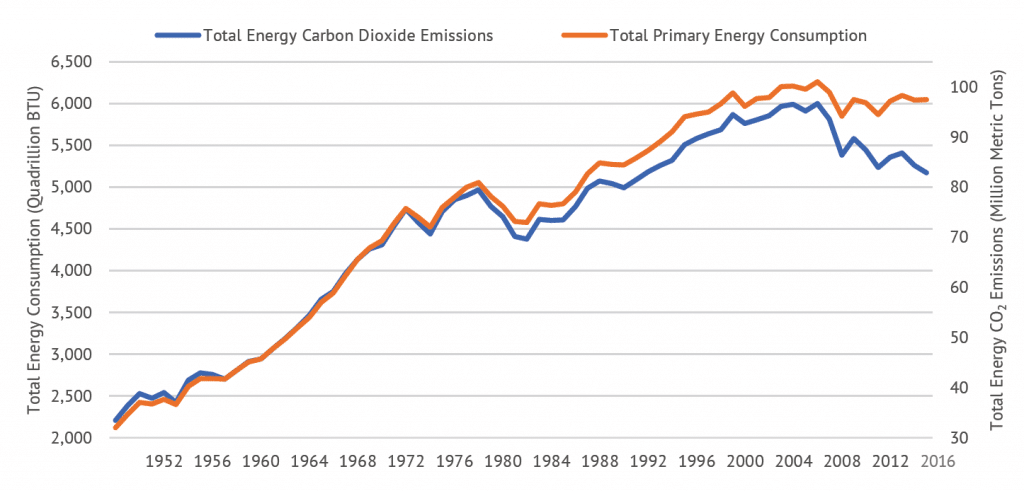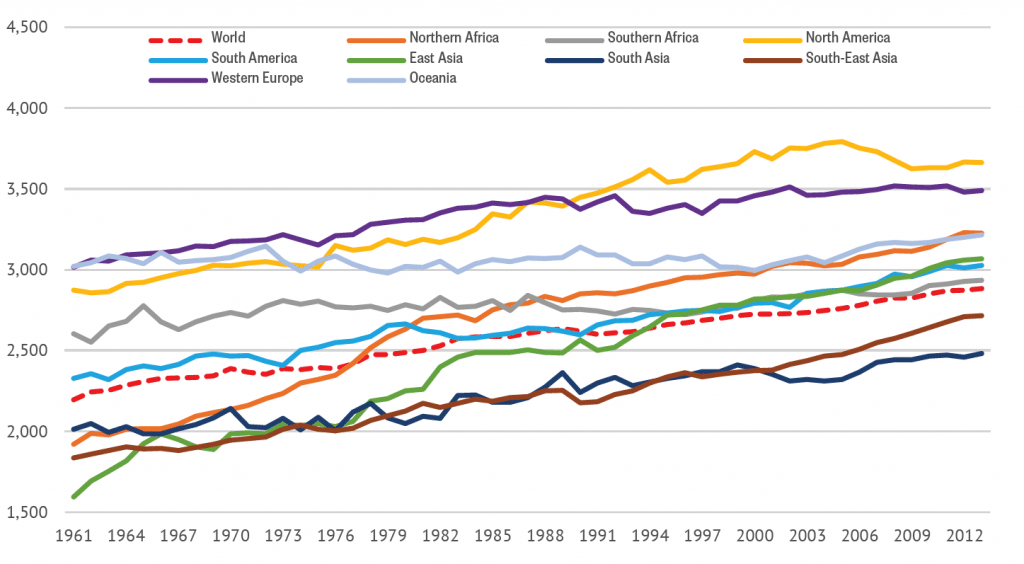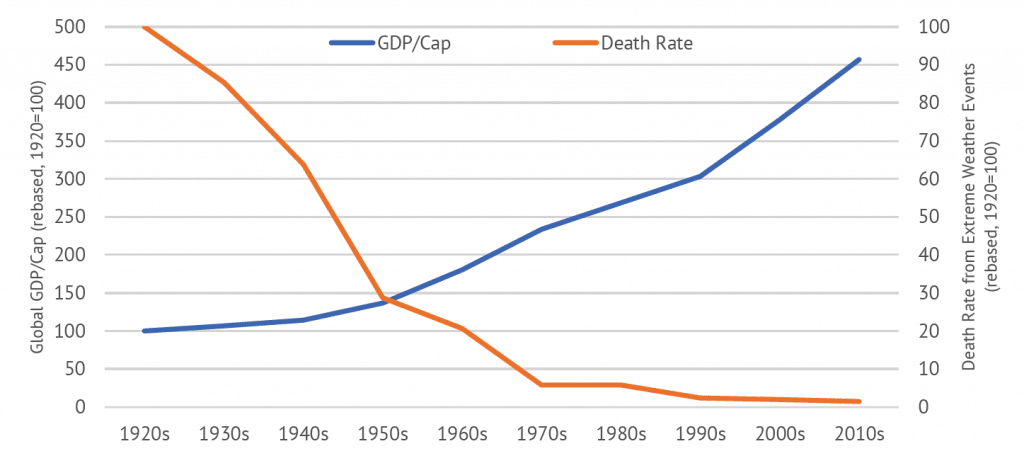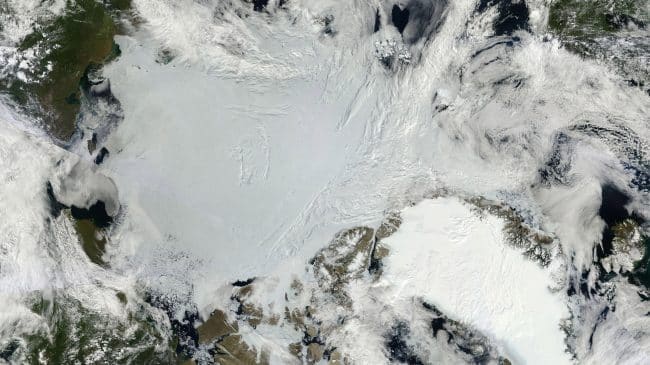Federal agencies are required to calculate the costs and benefits of new regulations that have significant economic effects. Since a court ruling in 2008, agencies have included a measure of the cost of greenhouse gas emissions when evaluating regulations that affect such emissions. This measure is known as the “social cost of carbon” (SCC).
Initially, different agencies applied different SCCs. To address this problem, the Office of Management and Budget and Council of Economic Advisors organized an Interagency Working Group (IWG) to develop a range of estimates of the SCC for use by all agencies. However, the IWG’s estimates were deeply flawed. In April 2017, President Trump issued an executive order rescinding the IWG’s estimates and disbanded the IWG. The question now is what value regulatory agencies should use for the SCC—if any—when evaluating rules that affect greenhouse gas emissions.
PROBLEMS WITH CALCULATING A SOCIAL COST OF CARBON
Most analyses of the social cost of carbon, including the IWG’s, have utilized “integrated assessment models” (IAMs), the basic methodology of which involves the following six steps:
- Develop (or choose from existing) scenarios of future emissions of GHGs;
- Use those scenarios to estimate future atmospheric concentrations of GHGs;
- Project changes in average global temperature and/or climate resulting from these future atmospheric GHG concentrations;
- Estimate the economic consequences of the resultant changes in temperature/climate;
- Estimate the costs of abating specific amounts of GHG emissions;
- Combine the estimates from steps 4 and 5 to produce an assessment of the net economic effect of different scenarios and thereby identify the optimum path of emissions.
Each step in this process is fraught with difficulty:
1. Future emissions of GHGs are unknown—and unknowable—but likely lower than assumed in most IAMs.
Future human-related emissions of GHGs will depend on many factors, especially: the human population, the extent and use of technologies that result in energy consumption, the types of technology used to produce energy, and the efficiency with which technologies use energy.
None of these factors can be forecast with any precision. Predicting future technologies is particularly challenging. However, greenhouse gas emissions from U.S. sources have declined from their peak (see Figure ES1), mainly as a result of using more energy-dense, lower carbon fuels (especially natural gas) and by using energy more efficiently (see Figure ES2).
Figure ES1: U.S. Energy Consumption and CO2 Emissions 1949-2016

Figure ES2: Sources Of U.S. Energy 1776-2012

Global emissions are rising but at a declining rate, in spite of robust economic growth. If these trends continue, future concentrations of greenhouse gases are likely to be at the low end of estimates used by the IWG when calculating the SCC.
2. The relationship between emissions and concentrations of greenhouse gases is complicated.
Calculating future atmospheric concentrations of GHGs, based on estimates of future human emissions, requires knowledge of the length of time that these GHGs will remain in the atmosphere. That, in turn, requires knowledge about the rate at which they will break down and/or be absorbed. This is no simple task. The rate at which GHGs such as methane and dinitrogen monoxide break down depends on such things as temperature and the amount of water vapor and other chemicals in the atmosphere with which they might react. The rate at which CO2 is taken up by plants, soil and oceans varies considerably depending on factors such as temperature and the availability of nutrients. The dynamic and interactive nature of these effects complicates the picture further.
3. The climate is likely much less sensitive to increased emissions of GHGs than has been presumed in most IAMs, including those used by the IWG.
Early estimates of the sensitivity of the climate to increased concentrations of greenhouse gases found that a doubling of atmospheric carbon dioxide would result in a warming of between 1.5°C and 4.5°C, with a “best guess” of 3°C. But those estimates were based on poorly specified models. Tests of models using those estimates of climate sensitivity predict about twice as much warming as actually occurred. Nonetheless, the IWG used those early, inaccurate estimates. More recent estimates of climate sensitivity suggest that future emissions are likely to result in much more modest warming of the atmosphere (with a doubling of carbon dioxide concentrations resulting in a warming of 1.5°C or less).
4. The effects of climate change are unknown—but the benefits may well be greater than the costs for the foreseeable future.
If the recent lower estimates of climate sensitivity are correct and emissions follow a relatively low path, warming will likely be modest and its effects mild. Likely effects include:
- Warming will be greater in cold places (i.e. farther from the equator), seasons (winter), and times (night) than in warm places (equatorial regions), seasons (summer) and times (day).
- At higher latitudes, winters will be less extreme.
- Precipitation will increase, but not everywhere, and some places will become drier.
- Sea levels will continue to rise slowly, as the oceans expand and land-based glaciers melt. (If current trends continue, sea level will rise by about 11 inches by 2100.)
- The incidence of extreme weather events will not change dramatically.
While increased temperatures in warm places and seasons may result in higher mortality among those who are less able to cope with higher temperatures, warmer winters will reduce the number of people who die from cold. Since 20 times as many people currently die from cold as die from heat, modest warming will reduce temperature-related deaths. These effects will be tempered by the use of heating and cooling technologies, but the costs of additional cooling will be more than offset by reduced expenditure on heating.
While rising temperatures have the potential to increase the incidence of some diseases, such as diarrhea, these effects are likely to be moderated by the adoption of better technologies, including piped clean water and sewerage.
Increased concentrations of carbon dioxide and higher temperatures are likely to increase agricultural output in many places. While agricultural output may fall in other places, this effect is likely to be moderated by the adoption of new crop varieties and other technologies. On net, crop production is likely to rise in the U.S. and globally.
Many economic models of climate change, including two of the three IAMs used by the IWG assume very limited adaptation. Yet the history of human civilization is one of adaptation. Food availability per capita and access to clean water have risen dramatically over the past half-century, reducing malnutrition and water-borne diseases and increasing life expectancy (see Figure ES3). Rising wealth and the adoption of new technologies have reduced mortality from extreme weather events by 98% in the past century (see Figure ES4). It seems highly likely that continued innovation and more widespread adoption of adaptive technologies will continue to reduce mortality, mitigating most—if not all—the adverse consequences of rising temperatures.
Figure ES3: Food Availability Per Capita In Select Regions, Food Supply, kcal/day

Figure ES4: Global Mortality From Weather-Related Natural Disasters Per Capita Income

5. The costs of reducing future emissions of GHGs are unknown—and will depend very much on the extent and timeframe of any reduction.
Proponents of taking action now argue that any delay would increase the total cost of emissions reductions—because baseline emissions (i.e. the emissions that would occur without any mandated reductions) would be higher and the size of any such future reduction would have to be greater. But such arguments presume both significant increases in baseline emissions and a need dramatically to reduce such emissions. If the trends in technology identified earlier do continue, growth in baseline GHG emissions will continue to slow and in the longer term may even fall without any government mandates. Indeed, it is possible that baseline emissions in the future (i.e. after 2050) will be consistent with a pathway of emissions that results in atmospheric GHG concentrations that generate net benefits.
Even if baseline emissions rise to a level that justifies intervention in the future, that does not necessarily justify reducing emissions now. Humanity currently relies predominantly on carbon-based fuels for energy generation, and the costs of alternative sources of energy are in most cases relatively high. (If alternative sources of energy were less expensive, then it would make economic sense to adopt them.) Continued innovation will almost certainly result in lower emissions per unit of output in the future, so the costs of reducing a unit of GHG emissions in the future will be lower than they are today.
6. When combining benefits and costs, the IWG used inappropriately low discount rates, giving the false impression that the benefits of reducing emissions are greater than the costs. At discount rates that reflect the opportunity cost of capital, the current costs of taking action to reduce GHG emissions now and in the near future are almost certainly greater than the benefits.
OMB guidelines state that, for the base case, “Constant-dollar benefit-cost analyses of proposed investments and regulations should report net present value and other outcomes determined using a real discount rate of 7%. This rate approximates the marginal pretax rate of return on an average investment in the private sector in recent years.”
Unfortunately, when discounting the benefits and costs associated with global warming, many analysts have used discount rates that do not reflect the opportunity cost of capital. For example, the IWG provided an estimate of the SCC at a 5% discount rate, but it is the highest rate given. In its guidance, the IWG emphasized the SCC calculated at a 3% discount rate. Its rationale for using the lower rate is that future benefits from avoiding climate change costs relate to future consumption, rather than investment. Policies to address climate change would affect both consumption and investment, but for the purposes of evaluation what matters is the effect on investment, since it is the effect of policies on investment decisions that will determine rates of innovation and hence economic growth, the ability to adapt to climate change, and future consumption. In other words, while future consumption is of primary concern, due to its relationship to human welfare, return on investment is the key factor determining future consumption. Thus, the appropriate discount rate is the rate of return on capital.
Changing the Assumptions
Changing the assumptions made in the IWG’s models can have a dramatic effect on estimates of the SCC. Anne Smith and Paul Bernstein of National Economic Research Associates ran the IAMs used by the IWG making four changes:
- they changed the emissions scenario to reflect more realistic assumptions regarding the relationship between emissions and economic growth;
- they changed the time horizon from 2300 to 2100;
- they changed the discount rate from 3% to 5%;
- they changed the scope from global to U.S. only.
When all these changes were combined, the effect was to reduce the SCC by 97%, from $43 to about $1.30. Smith and Bernstein’s analysis did not change any assumptions regarding climate sensitivity or other relevant climate parameters that might have been misspecified in the IAMs used by the IWG. Kevin Dayaratna, Ross McKitrick and David Kreutzer assessed the effects of using more-recent empirical estimates of climate sensitivity to calculate updated SCC estimates using two of the IWG models. They found that, for one model, the average SCC fell by 30%–50% and for the other it fell by over 80%. Moreover, at a 7% discount rate, one of the models generated a negative SCC.
If all of the adjustments made by Smith and Bernstein were combined with those made by Dayaratna et al. it seems likely that the SCC would fall to well below $1. Indeed, given uncertainties in the various parameters used, it seems difficult to avoid the conclusion that for practical purposes the SCC is effectively $0.
What About Catastrophic Climate Change?
Some economists have objected that conventional measures of the SCC fail adequately to account for the possibility of catastrophic climate change. However, such criticisms are based on assumptions concerning the probability of catastrophe that have no empirical basis. A recent attempt to estimate the SCC by surveying experts to find out what they would be willing to pay to avert catastrophe is so riddled with defects as to be of no utility.
THE SOCIAL COST OF CARBON AND REGULATORY REFORM
The IWG’s SCC was developed under Executive Order 12866, which requires regulatory agencies to consider the costs and benefits of regulations they are promulgating—and alternatives—and choose the regulatory option that maximizes net benefits to society.
If the SCC is $0, mandatory reductions of GHG emissions are not justified. Thus, regulations predicated on a positive SCC should be reconsidered. While these regulations often also have purported “co-benefits” of significant magnitude (such as reduced emissions of particulates), those co-benefits could almost certainly be achieved at much lower cost through alternative means. As such, when evaluating these regulations, agencies should compare their cost to alternative regulations that specifically address the co-benefit elements.
Other alternatives to mandatory reductions in emissions of GHGs that should be considered include the reform or removal of regulatory and other restrictions on the development of lower-carbon forms of energy and the removal of barriers to adaptation.
Full Study: Climate Change, Catastrophe, Regulation and The Social Cost of Carbon

